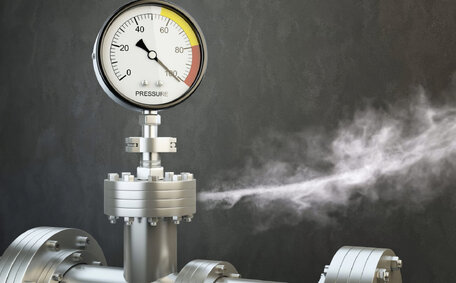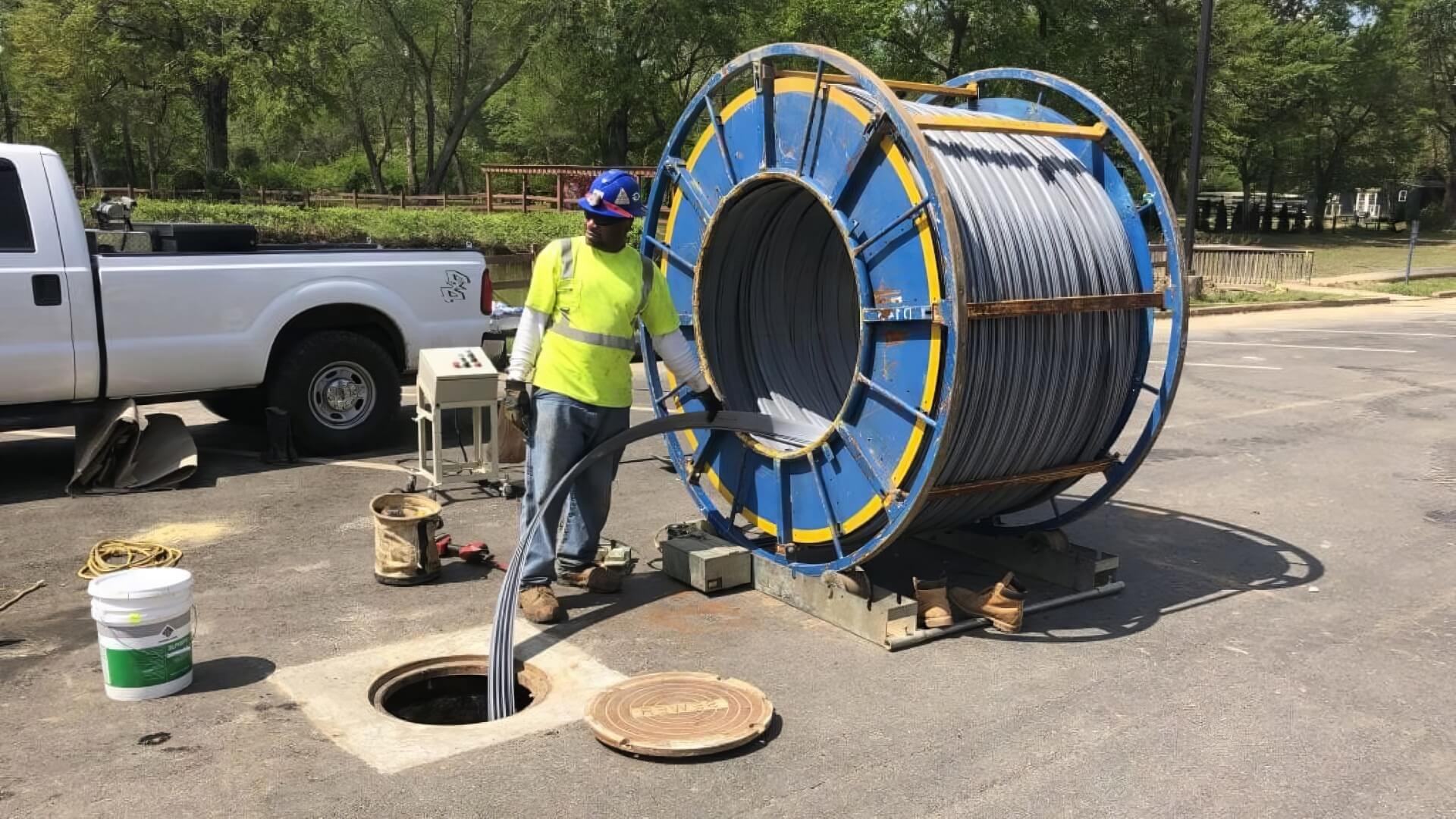What is pipe relining and how does it work as a preventative solution?
Pipe relining is an advanced trenchless technique that installs a liner within an existing pipe, providing a strong, long-term defence against pipe deterioration. The procedure operates by installing a resin-impregnated liner into a damaged pipe and then curing it to create a smooth, watertight lining, thus safeguarding your water flow.
As a preventative solution, pipe relining reinforces pipe integrity before major problems develop. Small cracks and corrosion often worsen over time, eventually causing pipe collapses, heavy leaks, blocked drains, and even backups in the sewage pipes. Relining pipes promptly offers a longterm solution, providing a protective barrier that helps prevent blocked drains and other issues from progressive wear.
Our pipe relining technique is fast and minimally invasive, safeguarding your property with targeted access points instead of wide-scale excavation. Resin liners can navigate your property’s sewer line twists and turns, coating the full length of your drain pipes. Once set, the epoxy resin is structurally sound and highly durable, ideal for repairing damaged pipes to ensure efficient water flow for an estimated 50 years.
Professional trenchless pipe relining services guarantee that relined pipes maintain or enhance water flow while securing peace of mind by blocking infiltration from soil, roots, and groundwater. This preemptive technique can help prevent leaks promptly, underpinning drain relining to sidestep expensive emergency drain repairs, property damage, or perilous sewage overflows.
Contact us today to determine if pipe relining is the right solution for your home or commercial sewer lines, preventing small issues from becoming major problems.
Evaluating if your pipes are a suitable candidate for preventative relining
When considering pipe relining as a preventative measure, the first step is assessing if your plumbing system is a suitable candidate. A qualified plumber evaluates key factors like pipe age, material type, current condition, and the cost pipe relining to advise the best solution.
Pipes in service for over 30 years are prime candidates for preventative relining to head off potential issues. However, your old pipes may also benefit in cases of premature wear or early root intrusion.
The material of your pipes is also a factor, as different types have varying costs and lifespans. For instance, galvanised steel, along with a wide range of other pipe types, may rust and corrode as years pass. Clay pipes also crack easily, while PVC and copper pipes, often considered for sewer pipe relining, last longer.
Upon inspection, a plumber investigates the complete system integrity to uncover issues like hairline cracks or pinhole leaks that indicate concerns about pipe health. They can then decide whether seamless pipe relining is a more suitable option than individual pipe repairs or replacements.
Contact your plumber at a professional plumbing company to schedule an on-site assessment for your residential pipe relining system. They’ll assess the suitability of CIPP pipe relining for your pipes to reinforce integrity and prevent deterioration.
Common causes of pipe deterioration over time
There are several common factors that contribute to the gradual deterioration of pipes over many years of use, ultimately shortening lifespan and leading to leaks or blockages if not addressed.
Corrosion is a major issue, particularly for cast iron pipes, causing rust accumulation and wearing away materials from the inside over time. Acidic drain cleaners and high mineral content in water can cause accelerated corrosion.
Constant water pressure and heavy use can stress pipes, potentially leading to cracks and fractures, and eventually a broken pipe. Hot water pipes are subject to extra pressure from temperature changes, which can occasionally cause breakages.
Tree roots pose another threat as they intrude through cracks seeking moisture, enlarging fractures. Root infiltration is a slow process, but it can culminate in pipe ruptures or sewage backflows, posing potential health threats to your property.
A pipe relining specialist addresses pipe deterioration effectively through internal barriers created during the relining process, often surpassing traditional methods. Contact a plumber who can help determine if relining existing pipes is recommended to reinforce and extend their lifespan.
Benefits of preventative pipe relining
Adopting a proactive stance with preventative pipe lining offers multiple advantages, like robust protection versus the risk of waiting for catastrophic pipe failures.
Epoxy resin liners from a completed pipe relining project are incredibly durable and can last over 50 years, serving as a reliable fix for damaged pipes. This high strength and question of 'how long does a repair last’ get answered by longevity that deliver excellent value and eliminates need for expensive recurrent repairs or full pipe replacements in the foreseeable future.
The setup for pipe relining spares you the extensive excavation pipe repairs require, thereby avoiding major disruptions to floors and walls. Strategic access points reduce the disturbance to your garden, as well as within homes and businesses, ensuring your day-to-day routine stays mostly unchanged unlike extensive construction undertakings.
Pipe relining is quicker than traditional drain repairs, reducing costs with fast-curing liners for an efficient single-session installation. This relative speed and convenience in any pipe relining project reduces labour costs and minimises downtime of plumbing systems.
Environmental benefits pipe relining are another advantage, with no broken concrete, soil removal or pipe materials ending up in landfill. Because there’s no need to dig up the landscape, the surrounding infrastructure and the structural solidity of your edifice remain intact.
What to expect from the pipe relining process
When pipe relining is used as a preventative measure, homeowners can expect a smooth, convenient process that reinforces pipe integrity with minimal disruption.
It embarks with a preliminary CCTV drain camera analysis, which, paired with state-of-the-art technology, offers a clear view of the internal pipe condition and concise layout—a crucial step in the drain cleaning process. High-pressure water jetting then cleans the pipeline if necessary, preparing it for the seamless epoxy resin liner.
To insert the custom-fitted liner for repairing commercial pipe damage, access points are strategically utilised, sparing you the hassle of digging up your landscape, at service entrances, drain lines, or vent stacks. Repairing damaged sections, resin-saturated felt is inflated with air pressure, pressing it firmly against pipe walls as it cures rapidly.
The resin cures to a rock-hard finish, sealing cracks and reinforcing the pipe’s structure, negating the need for excavation and ensuring drainage durability. The method, executed effectively, usually completes within hours from one pipe section to another, safeguarding against further damage. Once set, the smooth epoxy barrier prevents infiltration, optimising flow.
Pipe relining can be scheduled to suit homeowners’ availability, as it avoids extensive excavation. All work is neatly restored afterwards, with no detectable property disruption.
This efficient approach serves as an ideal preventative measure, extending pipes’ lifespan at a small fraction of replacement costs. Speak with a professional plumbing service to understand how pipe relining can strengthen your plumbing system integrity at no additional cost to traditional methods.
Average costs and return on investment for pipe relining
Pipe relining costs vary based on the pipes’ size and length, accessibility, and site conditions. However, Pipe relining costs typically range from $2000 - $7000 on average, providing clear financial advantages.
For context, full pipe replacement can cost over $10,000, involving significant excavation and repairs. Thus, the more costeffective approach of pipe relining delivers exceptional value, offering existing pipes a renewed lifespan of over 50 years without the hefty expense of replacement.
One of the main benefits is ensuring your pipe last, avoiding expensive future repairs if existing pipes fail. Relined pipes are highly durable, making the initial investment cost-effective over the long term.
Nuflow provides pipe relining services with quality liners, skilled technicians, and a 10-year warranty as standard. Their proprietary system and fixed price model ensure cost certainty for your pipe relining with no surprises.
Ultimately, pipe relining offers a high return on investment, renewing plumbing systems with improved flow, no infiltration, and enhanced leak protection. Reach out to discuss if your pipes are suitable candidates for affordable preventative relining.
Comparisons to full pipe replacement
When considering relining pipe versus full replacement, there are several key differences to consider in terms of practicality, costs and long-term outcomes.
Full pipe replacement completely removes and replaces old piping, requiring extensive excavation and often floor or wall demolition. This process typically takes more than a week, with labour and materials often costing in excess of $10,000.
In contrast, Pipe relining is a trenchless technique that eliminates the need to dig through small access points, with minimal structural disruption. In any relining project, epoxy resin liners set rapidly, usually within a day. Average project costs range from $2000 - $7000, making it extremely cost-effective.
While replacement delivers brand new pipes, longevity varies based on material and installation quality. Nevertheless, in some cases, professional application of relined pipes—enhanced by the stout epoxy barrier—boasts a life expectancy of about 50 years, outstripping traditional replacements.
Thus, at a portion of the replacement expense, pipe relining incorporates a new pipe into existing systems, reinforcing pipe durability for many years. This high return on investment makes it the preferable preventative and restoration solution in many cases. Contact a professional to advise the best option for your situation.
Assessing if pipe relining is the right solution for your home
Deciding whether pipe relining is the appropriate preventative or restorative solution for your home’s plumbing system requires a detailed evaluation of your circumstances.
Key factors to consider include the age and materials of your current sewer lines, their condition revealed in CCTV inspection, your budget for plumbing repairs, and the level of disruption you can accommodate.
As outlined, pipe relining offers numerous benefits by creating a new pipe within existing structures, serving as a minimally invasive and long-lasting alternative to full pipe replacement. Relined pipes have an approximate 50 year lifespan, avoiding future costly emergency repairs.
However, you should know about the fact that there’s no requirement for total replacement if severely damaged pipes can be addressed through relining. Newer pipes may also not require preventative relining yet.
Discover more about our Guildford Plumbing team’s wealth of over 25 years of expertise in appraising home and commercial plumbing to endorse suitable solutions. Whether for prevention or existing pipe problems, we evaluate if seamless epoxy relining is suitable for your needs.
Should you would like to inquire, contact Guildford Plumbing today on 1300 349 338 for expert guidance on whether pipe relining suits reinforcing your sewer pipe system integrity. We also offer email contact at [email protected] or an online booking form to schedule an on-site pipe assessment.






